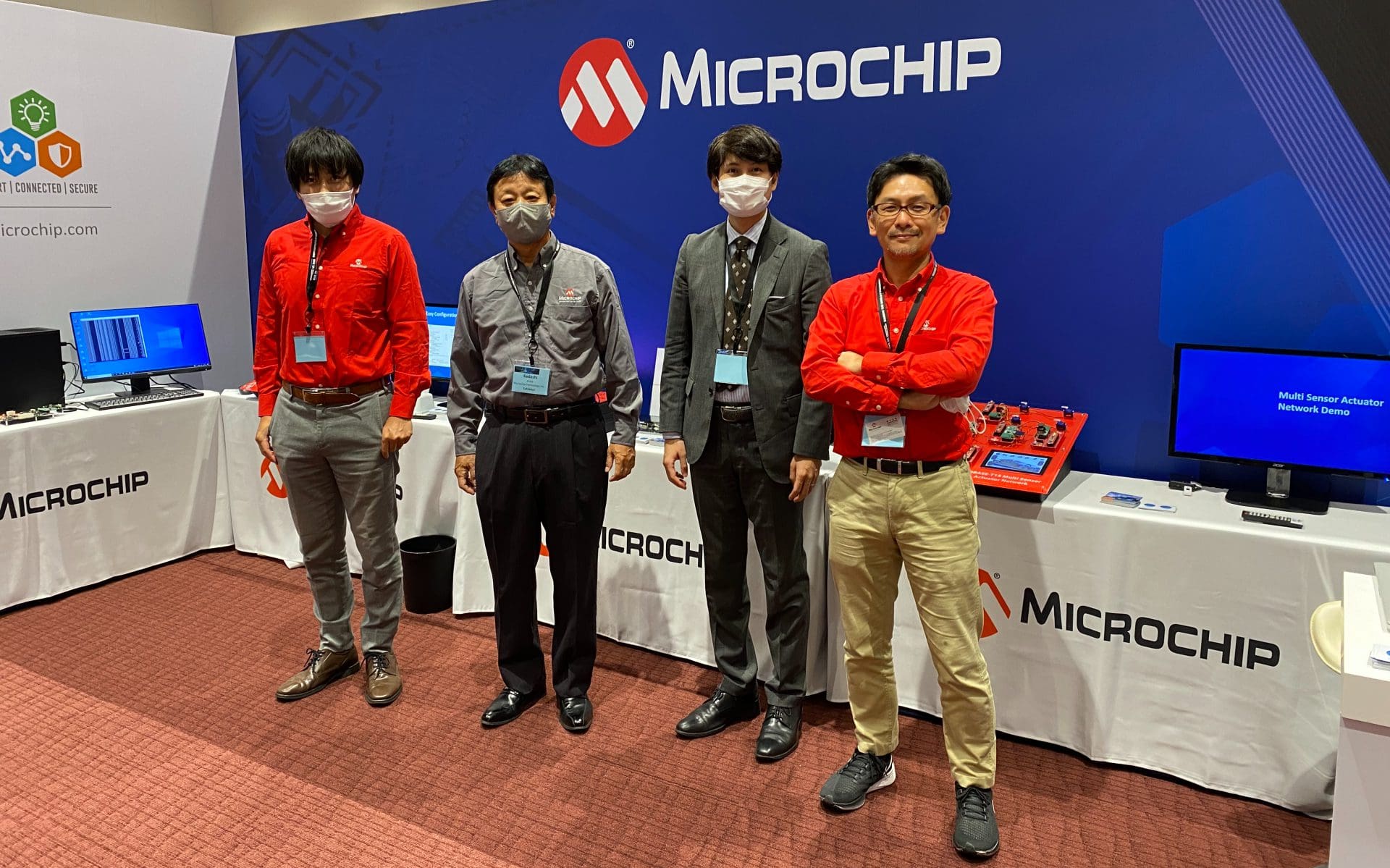In November 2022, Microchip participated in the IEEE Standards Association (IEEE SA) Ethernet & IP @ Automotive Technology Day in Yokohama, Japan as a Platinum sponsor. This annual event is focused on Ethernet and IP networks in vehicles, with presentations given by the industry’s leading experts and many suppliers showing their solutions in the exhibition area.
This year, Microchip focused on Single Pair Ethernet, showing switches, PHYs (physical layers), MAC-PHYs, and lowest power FPGAs (field-programmable gate arrays) supporting USXGMII (universal serial media independent interface) in typical network applications.
One highlight was 10BASE-T1S, an IEEE Ethernet standard for a 10mbps bus link. It can be compared to CAN (control area network) from a topology perspective but offers full Ethernet connectivity. It’s mainly used in applications where many nodes are connected to a single unshielded twisted pair of wires.
In the 10BASE-T1S demos that were available in Microchip’s booth, many of these applications showcased proximity, position, pressure, light, and gesture sensors as well as actuators like LED lights, motor, servo/fan control, and OLED displays. All applications were connected to a single bus line without the need for a switch. Nodes were communicating amongst each other to share the status of the sensors, initiating different behaviors of the actuators. For example, the result of sensing the proximity was visualized on a computer display, an embedded OLED, and an LED strip.
Another 10BASE-T1S demo showed a new architecture for exterior and interior lighting applications. It is used for applications with a high number of LEDs, such as future headlights using Matrix LEDs. To project animated navigation information, warnings, and other messages on the road, a high update rate is required. The functionality of video streaming in this case was based on Ethernet. A dedicated lighting ECU is becoming obsolete, as the stream is generated at the main vehicle computer.
Lighting is a great example of how Ethernet enables the transition to a Software Defined Vehicle. While in the legacy approach, hardware and software resulted in a fixed-function unit, in the new approach the headlamp only offers a service to project images at a high update rate. This service is used by different software applications such as lighting, navigating, warning, etc. To add new functionality, installing an application on the main vehicle computer is enough.
Finally, there was also a demo streaming audio data over Ethernet. A stream from an audio source was played from two receivers perfectly synchronized. This usually requires an MCU with a time-sensitive MAC and a lot of software. In this demo, the source and sink sides were handled by Microchip’s LAN9360, a part that takes care of all the protocol layers. The user doesn’t need to write a single line of source code to realize an AVB-compliant audio application. The demo worked with both 100BASE-T1 and 10BASE-T1S physical layers. Typical applications in a car would be infotainment speakers and microphones for hands-free operation.
The event demonstrated that in the long run, Ethernet could replace all networks found in a car today because it offers all the ingredients needed: security, safety, scalability, synchronization, and bus topology enabled by 10BASE-T1S.
Learn More About the IEEE SA Ethernet & IP @ Automotive Technology Day









